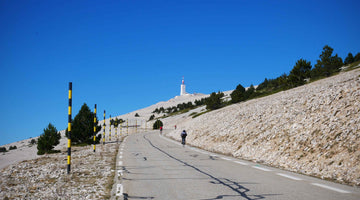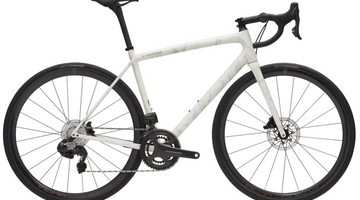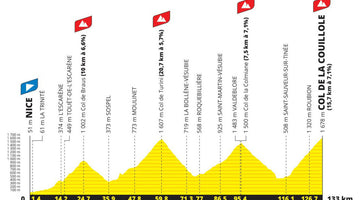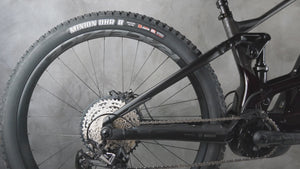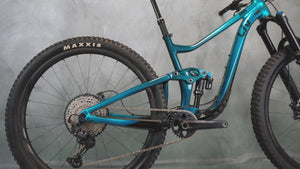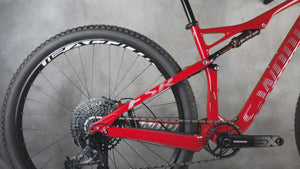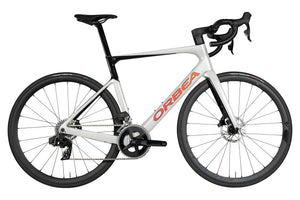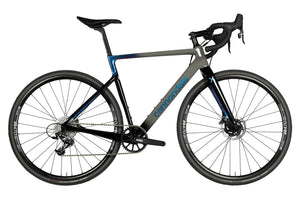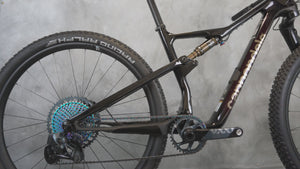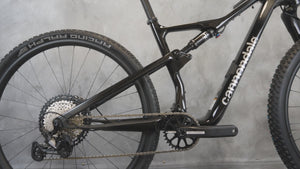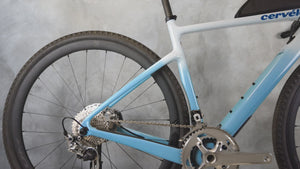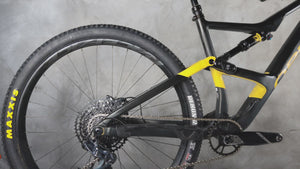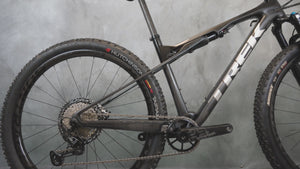How do I adjust a Shimano derailleur?
In this Article
- 1. Understanding How the Derailleur Works
- 2. Step 1: Check the Condition and Alignment of the Derailleur Hanger
- 3. Step 2: Adjust the stop screw positions for proper derailleur adjustment
- 4. Step 3: Adjust the cable tension
- 5. Step 4: Adjust the derailleur's overall alignment
- 6. Test your adjustments on the road
- 7. And how to adjust the front derailleur?
Published on 29 August 2024
The derailleur is the component of the bike that allows you to change gears by shifting the chain onto different sprockets on the cassette. If you hear strange noises when changing gears or if you notice that the gears are having trouble shifting, it's time to adjust your bike's derailleur.
Adjusting it often intimidates beginners, but it's not that difficult. Adjusting your bike's derailleur is useful for any cyclist, whether amateur or experienced. A well-adjusted derailleur ensures smooth gear changes, a better performance on the road or trails, and extends the lifespan of your equipment. A cross-head screwdriver, a 5 mm Allen key, and 15 minutes in front of you, and you’re good to go. How to adjust a Shimano derailleur? Here are the 4 essential steps.

Understanding How the Derailleur Works
Before diving into the details of adjustment, it is crucial to understand how a derailleur works. This component is a device that moves the chain from one sprocket to another on the rear cassette (rear derailleur) or from one chainring to another at the front (front derailleur). It is controlled by the gear levers located on the handlebars.
The rear derailleur has two limit screws (Low and High) that prevent the chain from exceeding the extreme sprockets. Similarly, the front derailleur is also equipped to prevent the chain from leaving the chainrings.
Tools Needed to Adjust a Derailleur
To adjust a derailleur, you will need:
- a cross-head or flat screwdriver (depending on the limit screws on your derailleur);
- an Allen key (generally 5 mm) to adjust the cable tension;
- a repair stand to stabilise the bike (optional but recommended).
Preliminary Check
Before starting the adjustment, ensure that:
- the chain and sprockets are clean and well-lubricated;
- the derailleur cable is in good condition, with no fraying;
- the limit screws (L and H) are correctly marked on your derailleur.
Step 1: Check the Condition and Alignment of the Derailleur Hanger
The hanger is the component that connects the derailleur to the frame. This hanger must be in perfect condition. If it is bent due to an impact, the derailleur will not function properly.
For proper gear shifting, the derailleur hanger must be straight. A technician often uses a derailleur alignment tool. It attaches to the hanger and compares its alignment with the cassette sprockets.
If you don’t have this tool, simply try to observe from the back of the bike that the derailleur is perfectly straight.

Step 2: Adjust the stop screw positions for proper derailleur adjustment
Before adjusting the derailleur stops, first loosen the tension cable so that it is free.
The stops are used to limit the derailleur’s range and prevent the chain from derailing either towards the wheel or the frame.

Adjusting the low stop
To adjust the low stop, locate the screw marked with an H. It allows you to adjust the alignment between the small cog and the derailleur pulley. Depending on the derailleur’s position, you need to tighten the screw to move it towards the wheel or loosen it to move it outward. The goal is to align the upper pulley with the small cog.
Adjusting the high stop
Now adjust the high stop, marked with an L. This is the most important adjustment because it prevents derailment into the wheel. To adjust it, shift to the largest cog. If you mistakenly shift to a higher gear and experience derailment, it means the derailleur is not sufficiently constrained and is directing the chain inward towards the wheel. To prevent this, gradually tighten the stop screw until the derailleur no longer moves, while ensuring that the gear can still shift onto the large cog. Test by shifting down and then up a gear. If the gear shifts well without going beyond, the adjustment is correct.
If the chain continues to go behind the cassette, further adjustments are needed.
A proper adjustment of the stops means perfectly aligned cogs with the guide pulley in place, without derailment or rattling. It also means a chain that easily shifts up and down between the outermost cogs.
Step 3: Adjust the cable tension
The cable actuates the derailleur and enables gear shifting controlled by the lever. The tension adjustment is done without tools, using the small dial at the lever or at the rear derailleur, depending on the model. 
Before adjusting the cable tension, first lubricate the cable. A smooth-moving cable is essential for proper gear shifting.
Then position your chain on the smallest cog.
Return to the dial on your lever and turn it fully clockwise, then unscrew it by about two turns. Repeat this process until your chain shifts correctly.
Shift through the gears one by one to check that the adjustments are correct. If all gears shift smoothly, the adjustment is complete.
If you experience noise during some gear shifts or the chain does not shift, it means the derailleur is not pulled sufficiently inward. In this case, unscrew the dial to increase tension.
Check again that the gears shift properly up the cassette and descend smoothly through each gear. If the chain does not shift onto the smallest cog, it means there is too much cable tension. You should then tighten the dial to reduce the tension and allow the chain to shift down.
Step 4: Adjust the derailleur's overall alignment
For the derailleur to function correctly, the pulley must be positioned at a certain distance from the cogs. The closer the pulley is to the cassette, the more precisely the gears will shift. The further it is, the harder it will be to change gears. Adjust the derailleur angle by setting the B screw. By adjusting this screw, you modify the distance and thus the angle. The distance between the pulley and the large cog should be 5 to 15 mm. This depends on your bike’s derailleur type. For a Shimano transmission, the adjustment should be done on the largest cog.

Test your adjustments on the road
Once you’ve adjusted your derailleurs, take a ride to test gear changes under different loads. If you notice any issues, revisit each step to ensure the adjustments have been done correctly.
For a better understanding, check out our video: How to adjust your rear derailleur?
And how to adjust the front derailleur?
To adjust your bike’s front derailleur, the steps are quite simple and follow a similar process:
- check the height and alignment of your front derailleur;
- adjust the low and high stops of the derailleur;
- adjust the cable tension.
Don’t worry, we also have an explanatory video on this topic: How to adjust the front derailleur?
Adjusting your bike’s Shimano derailleur might seem daunting at first, but with a little patience and the right tools, it is a completely achievable task. If the steps have been followed correctly but you are still encountering problems, perhaps a component is worn, such as a sticky derailleur cable that no longer slides properly or a chain that is too loose. To avoid this, maintain your bike well and lubricate the chain regularly.
















